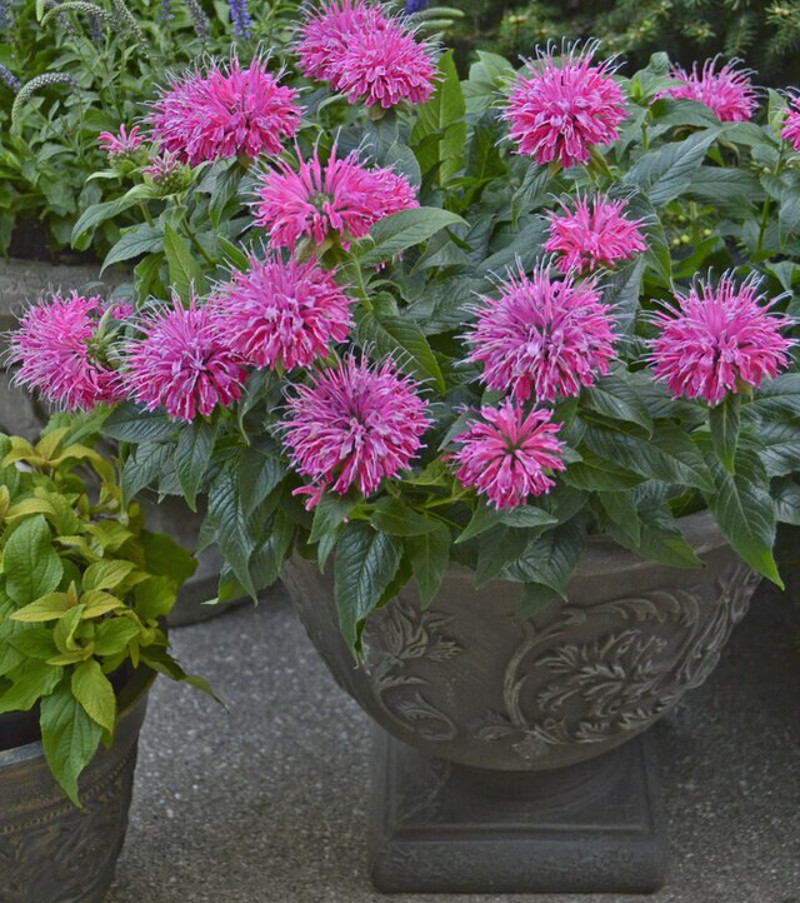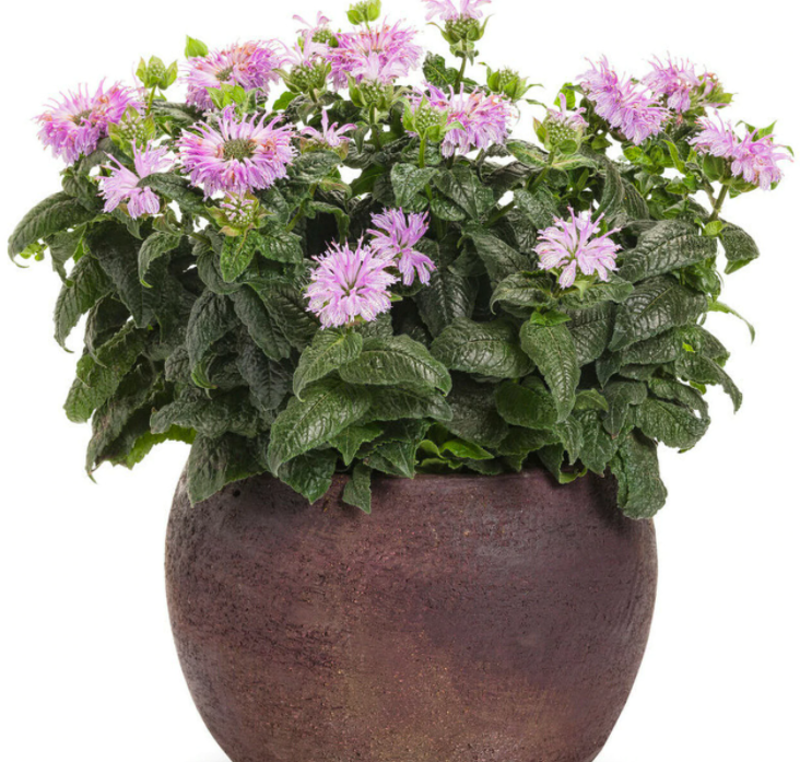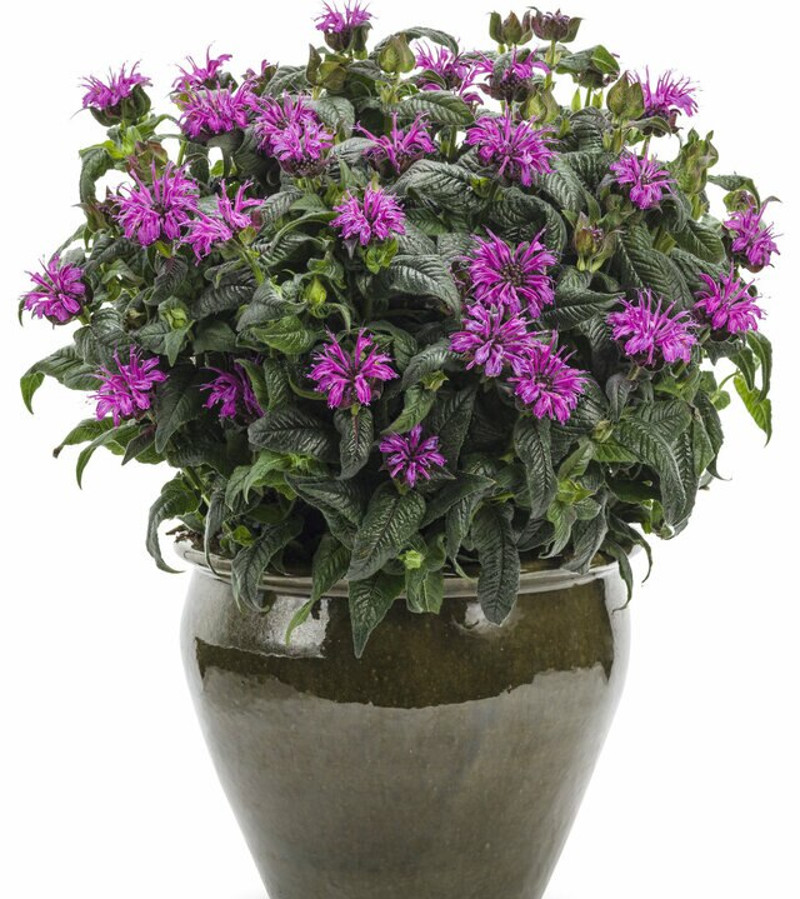Bee balm (Monarda spp.) is a flowering plant in the mint family. Native to North America, common names for the plant are Oswego tea and bergamot. Bee balm can spread in a garden, and a way to limit the spread is to plant bee balm in a container. Blooming for up to 6 weeks from mid summer to fall, this tall flowering plant is a beautiful centerpiece to a garden, patio, sunroom, balcony or porch area. When placed in an area that gets full sun, bee balm can successfully be grown in a container by itself, or as a centerpiece in a larger tub arrangement.

Planting Bee Balm in Pots
Bee balm grows anywhere from 2-4 feet tall, with petite varieties growing 10-15 inches tall. With its height and spreading characteristic, a 5-10 gallon pot is needed. Be sure that the pot is crack proof, weather resistant, and has good drainage holes. We recommend our resin plastic containers. Placement of the container is important as bee balm likes full sun and good air circulation. Patio, balcony, or an open deck area is the perfect place for a potted bee balm.
Best Soil For Bee Balm in Pots
Bee balm like well drained soil with a pH of 6.0-7.0. Rich soil will produce taller and stronger plants. You can use a standard potting mix; however, adding rich organic matter or compost to the soil will help add the nutrients needed for the bee balm to thrive. Bee balm will not tolerate too dry of soil, nor will it tolerate too wet of soil. Be sure that the pot you choose has drainage holes. For best results, water the plant whenever the top inch of soil is dry to the touch.
Caring For Bee Balm in Planters
Bee balm plants do not need a lot of care. Sunlight and water is all it needs. Place the pot in a location that gets full sun most of the day. An area that has good air circulation such as a balcony or patio is perfect. During the spring and summer, water the plant when the top inch of the soil feels dry. Fall and winter time less water is needed-- just enough so the soil is not dried out completely.

Watering Bee Balm in Pots
Bee balm plants prefer moist, well-drained soil. It can tolerate dry soil, but will not thrive. During the spring and summer growing periods, water thoroughly when the top inch of soil feels dry. Be sure that your container has drainage holes, as bee balm do not like soggy conditions. During the fall and winter, reduce the watering, using just enough water so the soil is not dry.
Fertilizing Bee Balm in Pots
Bee balms do not require heavy fertilizer. In fact, too much fertilizer can cause rampant succulent growth resulting in a powdery mildew on the plant. Mixing compost into the soil or spreading it on top of the potted soil each spring will give the bee balm enough nutrition for the season.

Winter Care For Bee Balm in Pots
Outdoor container bee balm will die back in cold weather. The container can be moved indoors for the winter, but it most likely will not flower. You can easily winterize bee balm. In the fall, trim the plant stems back within 2 inches of the soil. (usually after a light frost) Add an inch of mulch to the pot. Bee balm is a perennial, so it will return in the spring. Water occasionally just so the soil is not dry.
Can Bee Balm Be Grown Indoors
Bee balm can grow successfully indoors. Place the container in an area that gets full sun. Bee balm like moist well drained soil. Water the plant whenever the soil is dry an inch below the surface. Outdoor containers can be brought indoors for the cold season, but will most likely not flower.
 |
Author Chris Link - Published 01-15-2021 |
